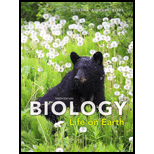
Organisms respond to _______. Organisms acquire and use _______ and ______ from the environment. Organisms are composed of cells whose structure is both ________ and ________. Collectively, organisms _____ over time.
To review:
The given blank space in the statement, “Organisms respond to ______. Organism acquires and uses _____ and _____ form the environment. Organism is composed of cells whose structure is both _____ and _____. Collectively, organism _____ over time.”
Introduction:
Every organism reacts toward stimuli. It helps them to adapt better in their nearby environment. This helps them to establish a balance between their body and surroundings.
Explanation of Solution
The provocatory action due to some activity occurring nearby is known as the stimulus. There are two types of stimuli namely: internal and external stimuli. For the body to the response against any action, there has to be an initiatory action known as the stimulus.
Living organism carries out their metabolic need either by energy production or consumption. Adenosine triphosphate (ATP), which is the energy currency of the cell, is produced when cell absorbs energy or uptakes certain organic or inorganic materials. Therefore, ATP provides energy to carry out the needful process in the cell.
The basic structural and functional unit of life is a cell. The structure and complexity of cell depends upon the organism of which it is a part of its evolutionary history. Multicellular organism contains a number of cells in comparison to a unicellular organism. Evolution is a degree of transformation in terms of heritable traits to the subsequent generation. The theory of evolution was given by Charles Darwin.
Organism responds to stimuli. Organism acquires and uses materials and energy from the environment. Organism is composed of cells whose structure is both organized and complex. Collectively, organism evolves over time.
Want to see more full solutions like this?
Chapter 1 Solutions
Biology: Life on Earth
 Human Anatomy & Physiology (11th Edition)BiologyISBN:9780134580999Author:Elaine N. Marieb, Katja N. HoehnPublisher:PEARSON
Human Anatomy & Physiology (11th Edition)BiologyISBN:9780134580999Author:Elaine N. Marieb, Katja N. HoehnPublisher:PEARSON Biology 2eBiologyISBN:9781947172517Author:Matthew Douglas, Jung Choi, Mary Ann ClarkPublisher:OpenStax
Biology 2eBiologyISBN:9781947172517Author:Matthew Douglas, Jung Choi, Mary Ann ClarkPublisher:OpenStax Anatomy & PhysiologyBiologyISBN:9781259398629Author:McKinley, Michael P., O'loughlin, Valerie Dean, Bidle, Theresa StouterPublisher:Mcgraw Hill Education,
Anatomy & PhysiologyBiologyISBN:9781259398629Author:McKinley, Michael P., O'loughlin, Valerie Dean, Bidle, Theresa StouterPublisher:Mcgraw Hill Education, Molecular Biology of the Cell (Sixth Edition)BiologyISBN:9780815344322Author:Bruce Alberts, Alexander D. Johnson, Julian Lewis, David Morgan, Martin Raff, Keith Roberts, Peter WalterPublisher:W. W. Norton & Company
Molecular Biology of the Cell (Sixth Edition)BiologyISBN:9780815344322Author:Bruce Alberts, Alexander D. Johnson, Julian Lewis, David Morgan, Martin Raff, Keith Roberts, Peter WalterPublisher:W. W. Norton & Company Laboratory Manual For Human Anatomy & PhysiologyBiologyISBN:9781260159363Author:Martin, Terry R., Prentice-craver, CynthiaPublisher:McGraw-Hill Publishing Co.
Laboratory Manual For Human Anatomy & PhysiologyBiologyISBN:9781260159363Author:Martin, Terry R., Prentice-craver, CynthiaPublisher:McGraw-Hill Publishing Co. Inquiry Into Life (16th Edition)BiologyISBN:9781260231700Author:Sylvia S. Mader, Michael WindelspechtPublisher:McGraw Hill Education
Inquiry Into Life (16th Edition)BiologyISBN:9781260231700Author:Sylvia S. Mader, Michael WindelspechtPublisher:McGraw Hill Education





